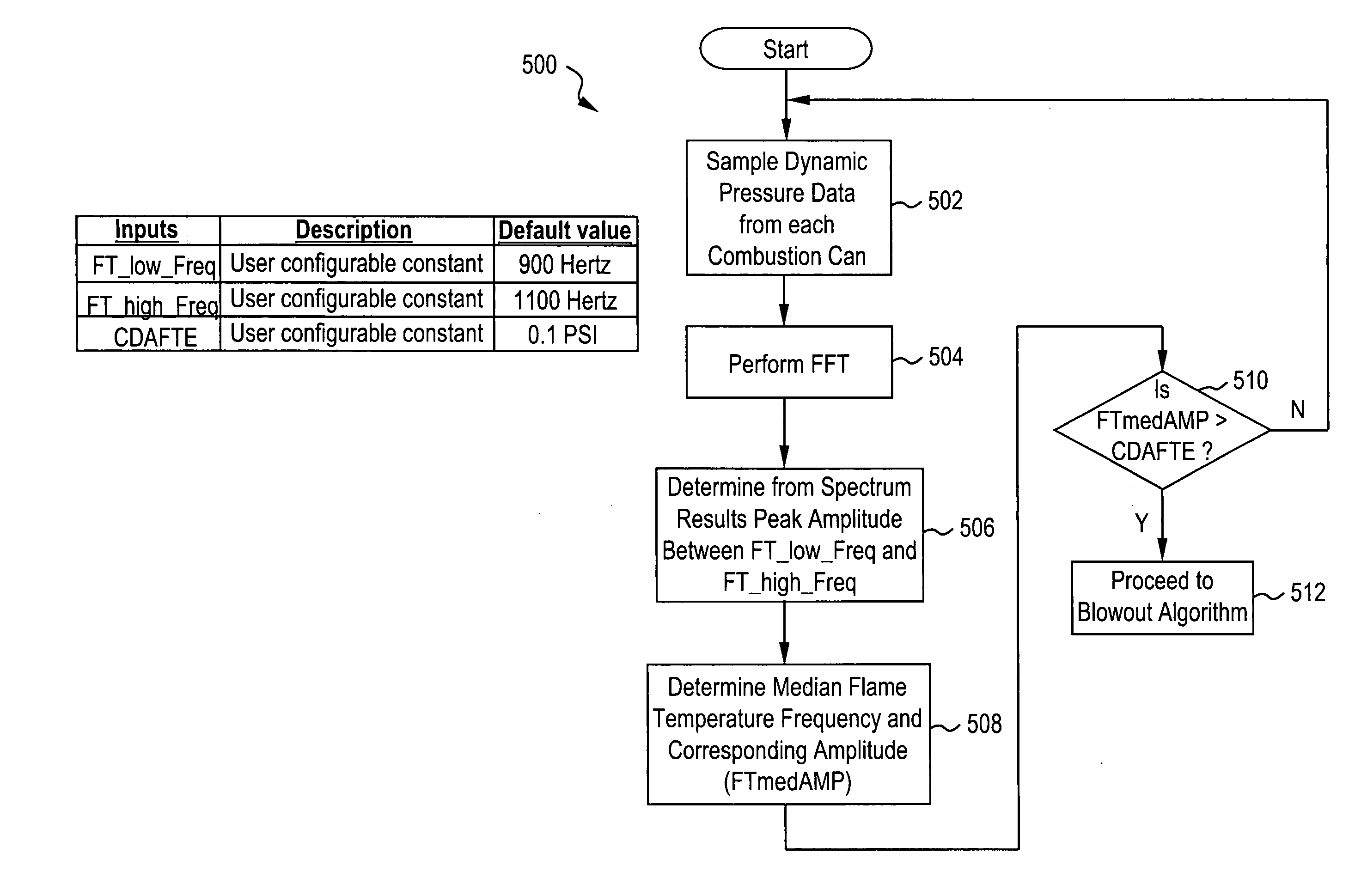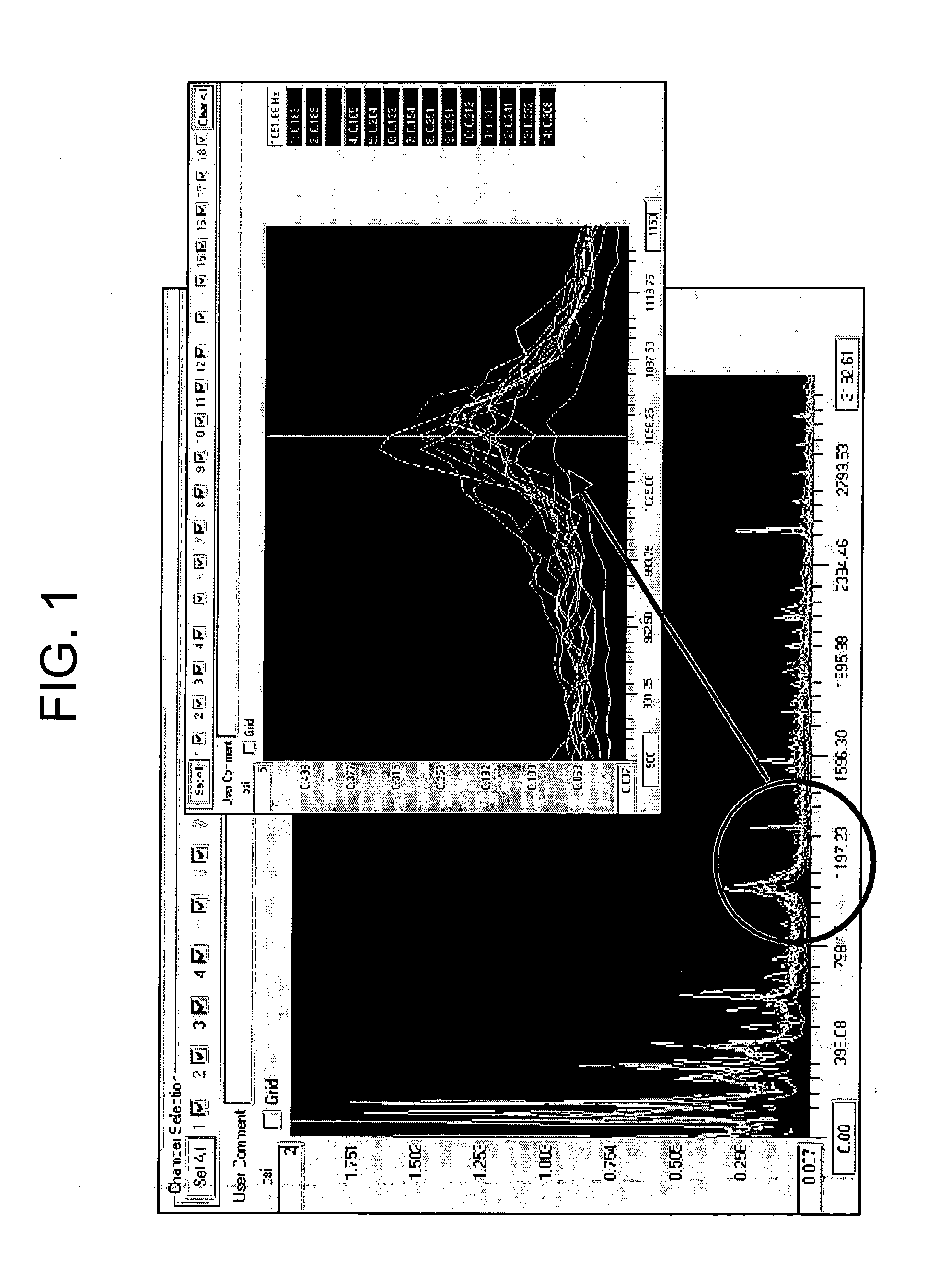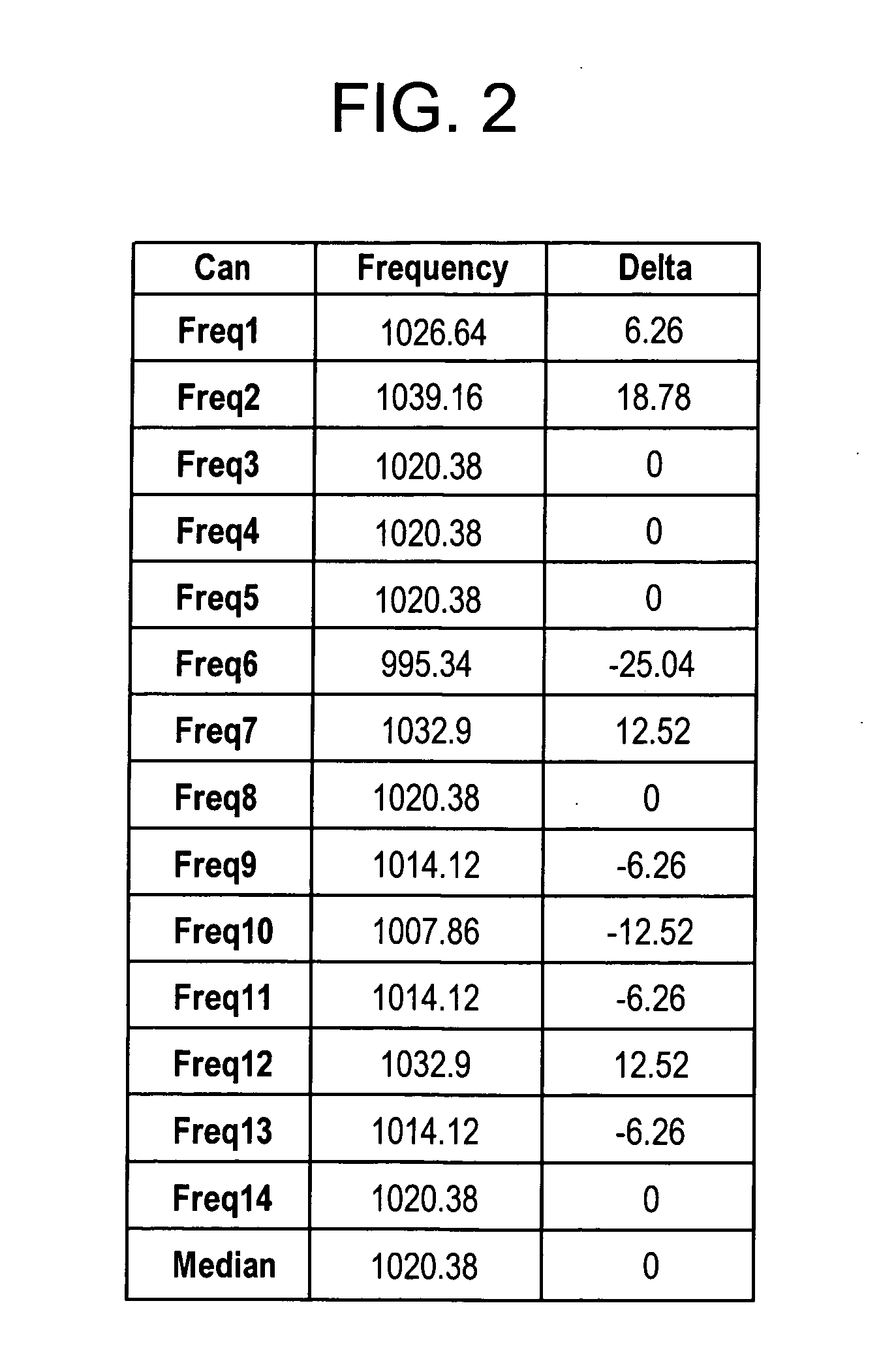Method and system for determining lean blow out condition for gas turbine combustion cans
a technology of combustion cans and gas turbines, applied in the direction of machines/engines, failure to burn, etc., can solve the problems of reducing co, hc and nox emissions, affecting the efficiency of combustion, and unable to meet the requirements of combustion,
- Summary
- Abstract
- Description
- Claims
- Application Information
AI Technical Summary
Benefits of technology
Problems solved by technology
Method used
Image
Examples
Embodiment Construction
[0022] Disclosed herein is a method and system for predicting when a turbine combustor is approaching a lean blow out condition, and to thereafter generate an alarm to indicate that corrective action is to be taken in order to reduce the risk of flame blowing out in the combustor. Briefly stated, the methodology described herein is based on measuring the frequency of one of the acoustic modes (e.g., a standing wave which is generated at resonance frequencies of combustor) occurring inside the combustion chamber. This acoustic mode travels in a direction that is transverse to the axis of the combustion liner, and the frequency of this mode is determined by the geometric dimensions of the combustor as well as the speed of sound of the gas inside the combustion chamber.
[0023] The speed of sound of the gas may in turn be calculated from the gas temperature and gas properties. Thus, by measuring the resonant frequency and by knowing the combustor dimensions and gas properties, the tempe...
PUM
 Login to View More
Login to View More Abstract
Description
Claims
Application Information
 Login to View More
Login to View More - R&D
- Intellectual Property
- Life Sciences
- Materials
- Tech Scout
- Unparalleled Data Quality
- Higher Quality Content
- 60% Fewer Hallucinations
Browse by: Latest US Patents, China's latest patents, Technical Efficacy Thesaurus, Application Domain, Technology Topic, Popular Technical Reports.
© 2025 PatSnap. All rights reserved.Legal|Privacy policy|Modern Slavery Act Transparency Statement|Sitemap|About US| Contact US: help@patsnap.com



